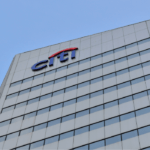A big change in 2022
Organisations are now experimenting with a variety of models to cater to the business requirements, while keeping employee safety and flexibility in mind. The hybrid model has become the most common go-to approach, as organisations have realised that ‘no one size fits all’. Work arrangements are being tailored basis the job.
The virtual world has challenged the relevance of organisational hierarchies and their impact on workplace dynamics as well as the ways of working and engagement.
In the virtual model, there will be a whole new workforce joining organisations in terms of career 2.0, gig employment and so on. These employees and their fitment into the organisational structure will also have an impact on the traditional organisational hierarchy and pyramid.
In a hybrid model, leaders and executives will need to address how they are managing fairness and equity across the increasingly varied employee experience.
Fairness and equity will be the defining factors and this is being reflected in various ways — figuring out the future of work; who will work from home; and how that will affect performance, pay and growth opportunities within an organisation.
Change in leadership development programmes in 2022
Effective leadership looks very different today than what it did two years ago. The pandemic has catapulted the need for critical management skills such as empathy, adaptability and resilience.
To lead organisations effectively at a time when emotions and uncertainty levels are high, soft skills have become more important than ever before.
The virtual world has challenged the relevance of organisational hierarchies and their impact on workplace dynamics as well as the ways of working and engagement
As more and more employees work from home, leaders need to adapt to virtual leadership. It is critical for the leaders to actively listen and engage with employees to uncover and address concerns on the go, and identify roadblocks to work towards proactively. Therefore, there is a clear need to curate development programmes that train leaders on these skills.
We also need to identify effective ways of deployment in a virtual world where digital-first learning programmes will be the focus.
Broader strategy to boost DE&I in 2022
One of the positive outcomes of this pandemic is that it has forced historically traditional organisations to start conversations around a psychologically safe workplace and mental health of the employees.
It is one thing to hire diverse candidates, and quite another to build a culture that is inclusive to everyone. To make sure no one is left out, organisations need to make data-centric decisions instead of relying on their gut feelings. Targets for diversity and inclusion programmes must include gender representation, as well as inclusion at various levels of the organisation.
As the world becomes more volatile and continues to disrupt our lives, it is essential to tap into ideas and expertise from people with different backgrounds and experiences. Improving diversity will hold the key to unfolding newer ways of thinking, reaching out to a wider range of customers and in turn, having a significant impact on an organisation’s bottom line.
Value our content... contribute towards our growth. Even a small contribution a month would be of great help for us.
Since eight years, we have been serving the industry through daily news and stories. Our content is free for all and we plan to keep it that way.
Support HRKatha. Pay Here (All it takes is a minute)




































